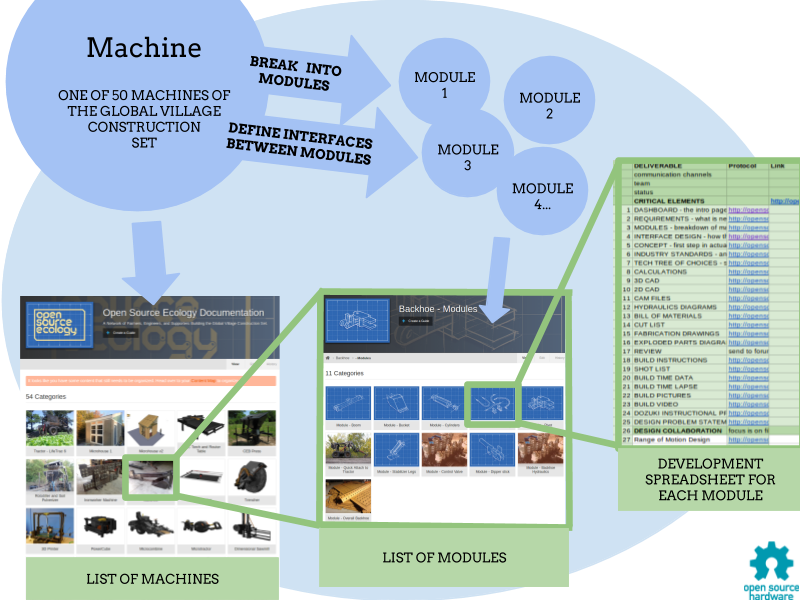Module Based Design: Difference between revisions
No edit summary |
No edit summary |
||
| Line 1: | Line 1: | ||
Method of design where machines are broken into independent modules - and even the modules are broken down into further components. This allows for parallel design and builds. The key to effective collaborative design is defining a clear interface between modules so they fit together into a complete machine. | Method of design where machines are broken into independent modules - and even the modules are broken down into further components. This allows for parallel design and builds. The key to effective collaborative design is defining a clear interface between modules so they fit together into a complete machine. | ||
[[File:modulebased.png]] | |||
Developers document all work as links in the [[Development Spreadsheet]], such that the overall documentation platform becomes a one-stop-shop for finding all past work. Each machine or module typically goes through several prototype iterations. Finding the vast amount of past work is critical. With our platform, it takes 3 clicks from Machine (50)-> Module (12) -> Development Spreadsheet (40) to access any of the 150,000 items that will be necessary to complete the entire GVCS. In order to make collaborative development by a large, diverse, community possible – the key is making the information easy to access: by providing excellent information architecture – such as infographics and organization – and by making information bite-sized. | |||
=Links= | =Links= | ||
*[[Module-Based Development]] | *[[Module-Based Development]] | ||
Revision as of 01:13, 22 September 2019
Method of design where machines are broken into independent modules - and even the modules are broken down into further components. This allows for parallel design and builds. The key to effective collaborative design is defining a clear interface between modules so they fit together into a complete machine.
Developers document all work as links in the Development Spreadsheet, such that the overall documentation platform becomes a one-stop-shop for finding all past work. Each machine or module typically goes through several prototype iterations. Finding the vast amount of past work is critical. With our platform, it takes 3 clicks from Machine (50)-> Module (12) -> Development Spreadsheet (40) to access any of the 150,000 items that will be necessary to complete the entire GVCS. In order to make collaborative development by a large, diverse, community possible – the key is making the information easy to access: by providing excellent information architecture – such as infographics and organization – and by making information bite-sized.
